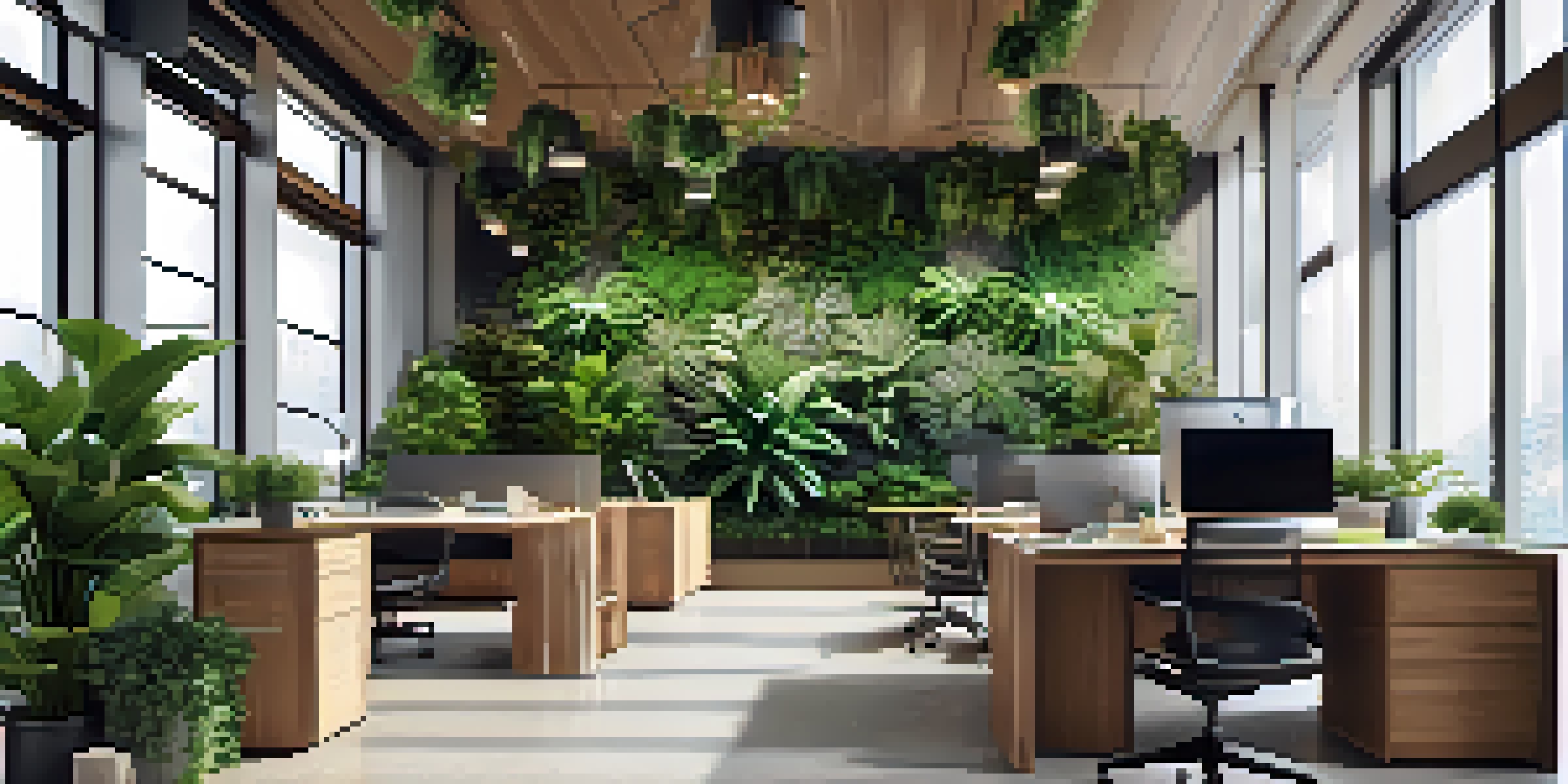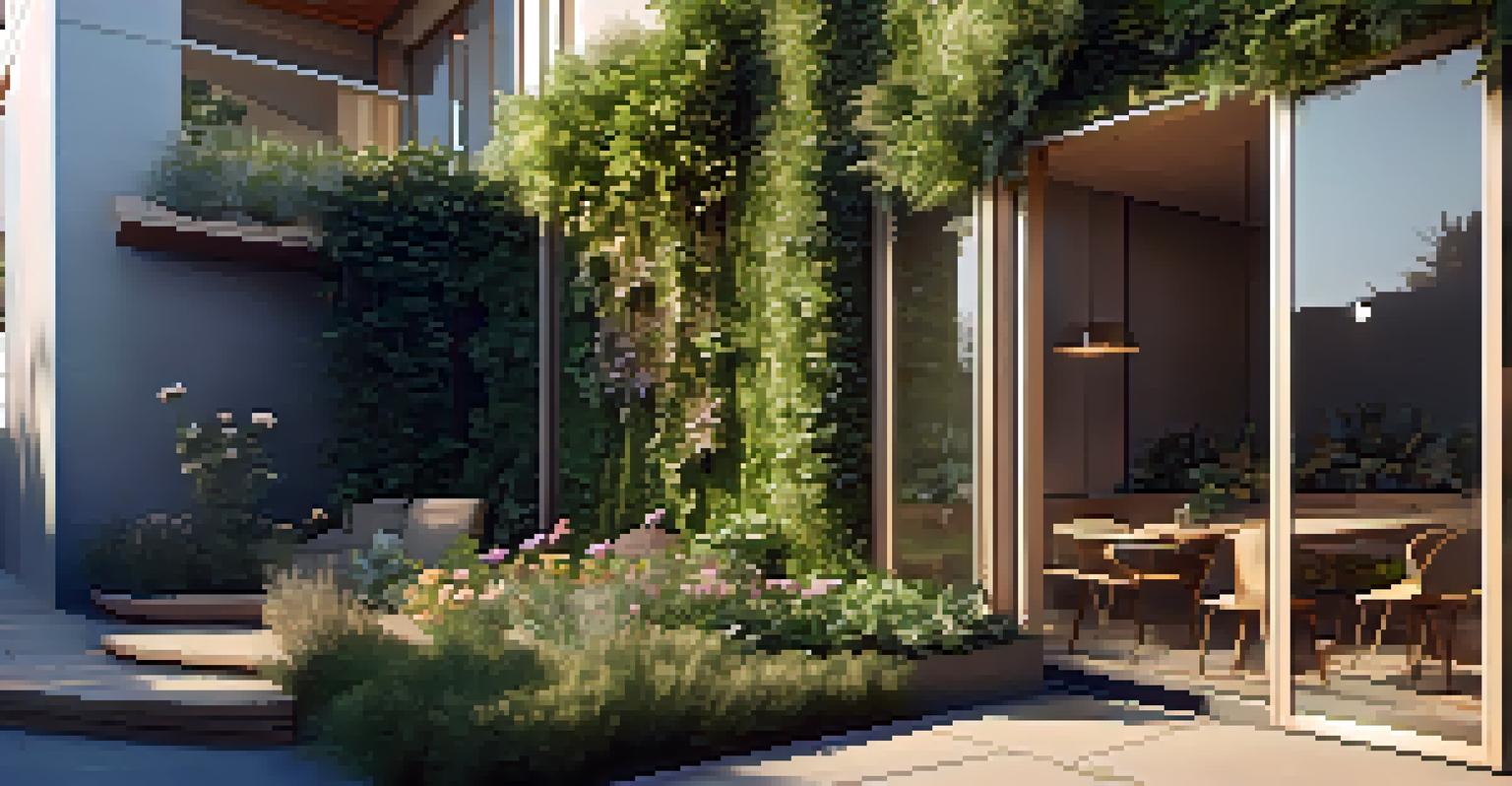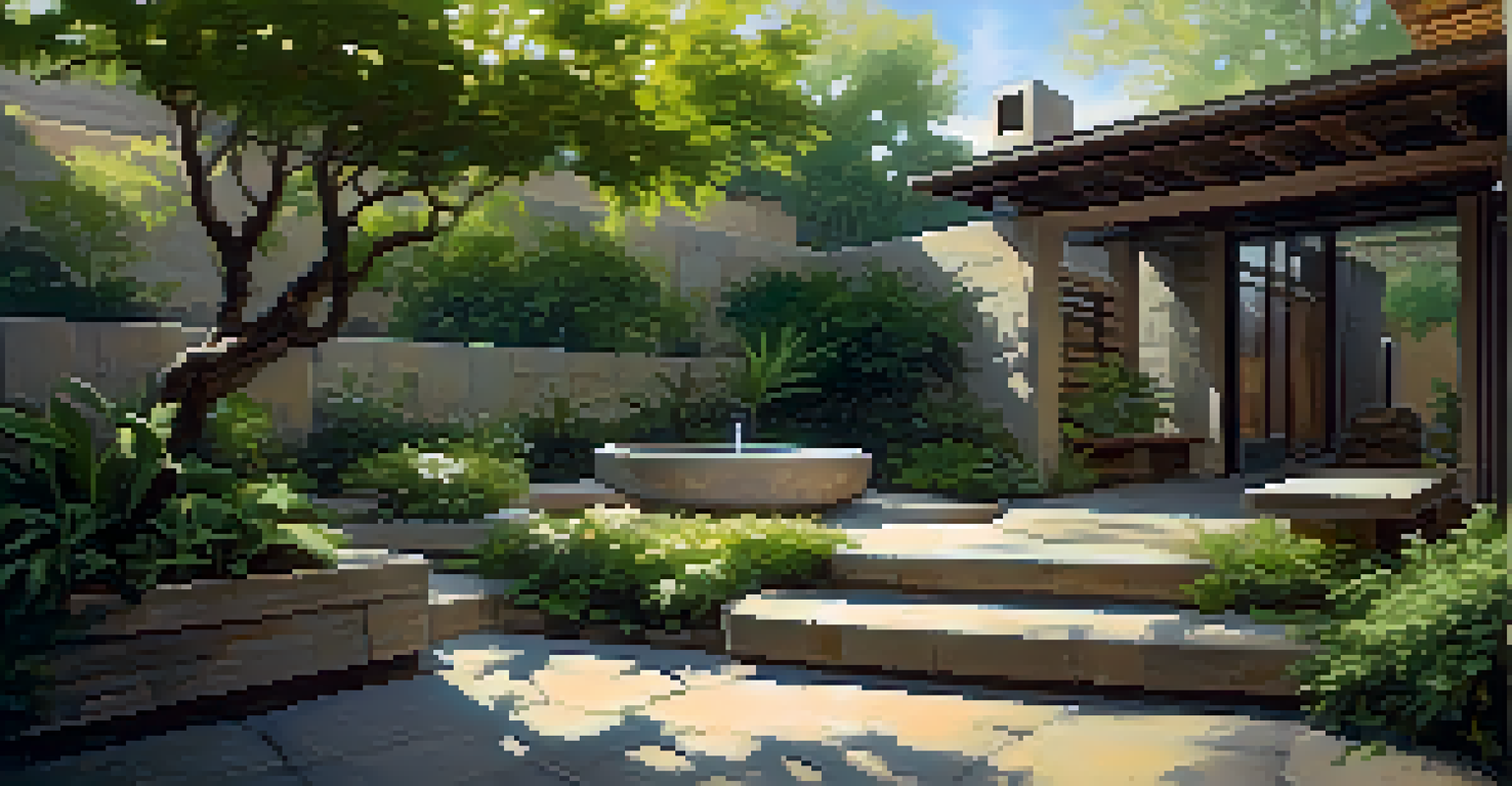Integrating Biophilic Design in Sustainable Building Practices

Understanding Biophilic Design and Its Importance
Biophilic design focuses on incorporating nature into built environments, creating spaces that foster a connection to the natural world. This approach can significantly enhance the well-being of occupants, reducing stress and promoting mental health. By using elements like natural light, plant life, and organic materials, biophilic design transforms sterile spaces into vibrant, inviting areas where people feel more at ease.
The architecture of our buildings and cities must be rooted in the natural world if we are to have a future that is sustainable and healthy.
In the context of sustainable building practices, biophilic design plays a crucial role. It not only improves occupant experience but also encourages energy efficiency and the use of sustainable materials. Buildings that embrace biophilic principles often have lower carbon footprints and reduced energy consumption, aligning perfectly with modern sustainability goals.
Ultimately, integrating biophilic design into architecture is about more than aesthetics; it’s about creating environments that support both human health and ecological balance. This synergy between nature and design invites a more sustainable approach to building, making it a win-win for both people and the planet.
Benefits of Biophilic Design in Sustainable Buildings
The benefits of biophilic design extend far beyond visual appeal. Research shows that incorporating natural elements into buildings can enhance productivity and creativity among occupants. For example, offices with ample natural light and greenery often report higher employee satisfaction and lower absenteeism, which can translate into substantial cost savings for businesses.

Moreover, biophilic design can lead to improved air quality and reduced environmental impact. Plants naturally filter air pollutants and improve indoor air quality, helping to create healthier living and working environments. This aspect not only benefits individuals but also contributes to the overall sustainability of a building, making it more eco-friendly.
Biophilic Design Enhances Well-Being
Incorporating natural elements into spaces significantly boosts occupant health and reduces stress.
Additionally, biophilic design can boost the building's value. Properties that integrate natural elements often see increased market demand and higher resale values. As more consumers prioritize health and sustainability, buildings that embrace biophilic principles are likely to stand out in a competitive real estate market.
Key Elements of Biophilic Design
Biophilic design can be broken down into specific elements that architects and builders can incorporate into their projects. These include natural lighting, which can be achieved through large windows and skylights, and the use of natural materials like wood and stone. Such elements not only enhance aesthetics but also create a more inviting atmosphere.
Designing with nature is the key to sustainable architecture and making buildings that are in harmony with the environment.
Another essential component is incorporating greenery, whether through indoor plants, green walls, or outdoor gardens. These features not only beautify spaces but also provide psychological benefits, making people feel more connected to nature. For instance, a simple potted plant on a desk can significantly improve mood and productivity.
Lastly, views of nature play a critical role in biophilic design. Whether it’s a scenic landscape or a small courtyard, having visual access to natural settings can reduce stress and enhance overall well-being. The inclusion of such views in building design fosters a sense of calm and connection to the environment.
Integrating Biophilic Principles in Design Processes
Incorporating biophilic design principles requires a thoughtful approach during the design phase of a building project. It begins with understanding the site’s natural characteristics and how they can be enhanced. For example, positioning windows to maximize natural light or designing outdoor spaces that complement the surrounding landscape are essential considerations.
Collaboration among architects, landscape designers, and builders is key to successfully integrating biophilic elements. By working together, teams can create cohesive designs that prioritize both functionality and a connection to nature. This collaboration can lead to innovative solutions that might not have been possible in a more siloed approach.
Sustainability Through Nature Integration
Biophilic design not only improves aesthetics but also promotes energy efficiency and eco-friendly practices.
Furthermore, involving future occupants in the design process can yield valuable insights. Gathering input on how people want to interact with their environment can lead to tailored solutions that truly enhance their experience. Ultimately, this inclusive approach can result in spaces that feel more personalized and aligned with users' needs.
Case Studies of Successful Biophilic Design
Several notable buildings around the world showcase the successful integration of biophilic design. One example is the Bosco Verticale in Milan, Italy, which features residential towers covered in thousands of trees and plants. This vertical forest not only provides beautiful views but also contributes to urban biodiversity and improved air quality.
Another inspiring case is the Eden Project in Cornwall, England. This attraction consists of multiple geodesic domes filled with diverse plant species from different climates. The biophilic design of the Eden Project not only educates visitors about ecology but also creates a unique space that promotes sustainability and conservation.
These case studies illustrate how biophilic design can be effectively implemented across various building types, from residential to educational and recreational spaces. They serve as powerful examples for architects and builders looking to incorporate nature into their projects, demonstrating that sustainability and aesthetics can go hand in hand.
Challenges in Implementing Biophilic Design
While the benefits of biophilic design are clear, implementing these principles can come with challenges. One significant hurdle is the initial cost of integrating natural elements, such as green roofs or extensive landscaping. However, many experts argue that these costs can be offset by the long-term savings associated with improved energy efficiency and occupant health.
Another challenge is the need for ongoing maintenance of biophilic features. Living plants and green spaces require care, which can lead to additional costs and labor. It's essential for building owners and managers to plan for this maintenance to ensure that the biophilic elements remain vibrant and effective over time.
Collaboration is Key to Success
Integrating biophilic principles requires teamwork among architects, designers, and occupants to create cohesive environments.
Lastly, there can be a perception that biophilic design is a luxury rather than a necessity. Educating stakeholders about the long-term benefits for both occupants and the environment is crucial. By clearly communicating these advantages, advocates for biophilic design can help shift mindsets and promote broader adoption in sustainable building practices.
The Future of Biophilic Design in Sustainability
The future of biophilic design in sustainable building practices looks promising as more architects and developers recognize its value. With a growing emphasis on health and wellness in the built environment, biophilic principles are becoming increasingly integrated into mainstream design. This shift reflects a broader cultural movement toward sustainability and a deeper appreciation for nature.
Technological advancements are also playing a role in this evolution. Innovations like smart irrigation systems for green roofs and energy-efficient lighting can enhance the effectiveness of biophilic design elements. These technologies can help ensure that natural features thrive while minimizing their environmental impact.

As we move forward, it’s likely that biophilic design will become a standard practice in new buildings. By prioritizing the connection between people and nature, architects and builders can create spaces that not only meet the needs of occupants but also contribute positively to the environment. This vision aligns perfectly with the goals of sustainable development, paving the way for healthier, more resilient communities.